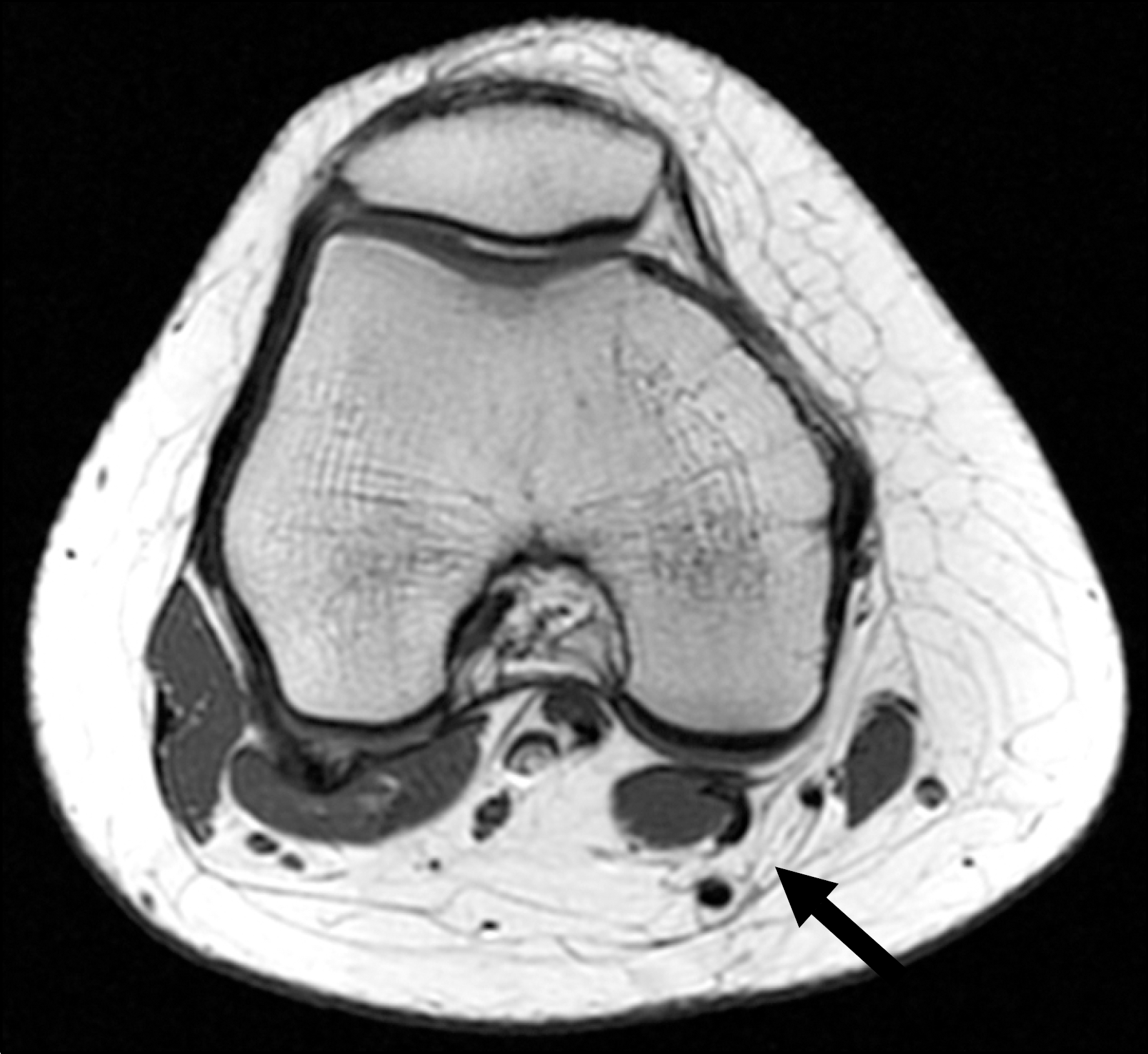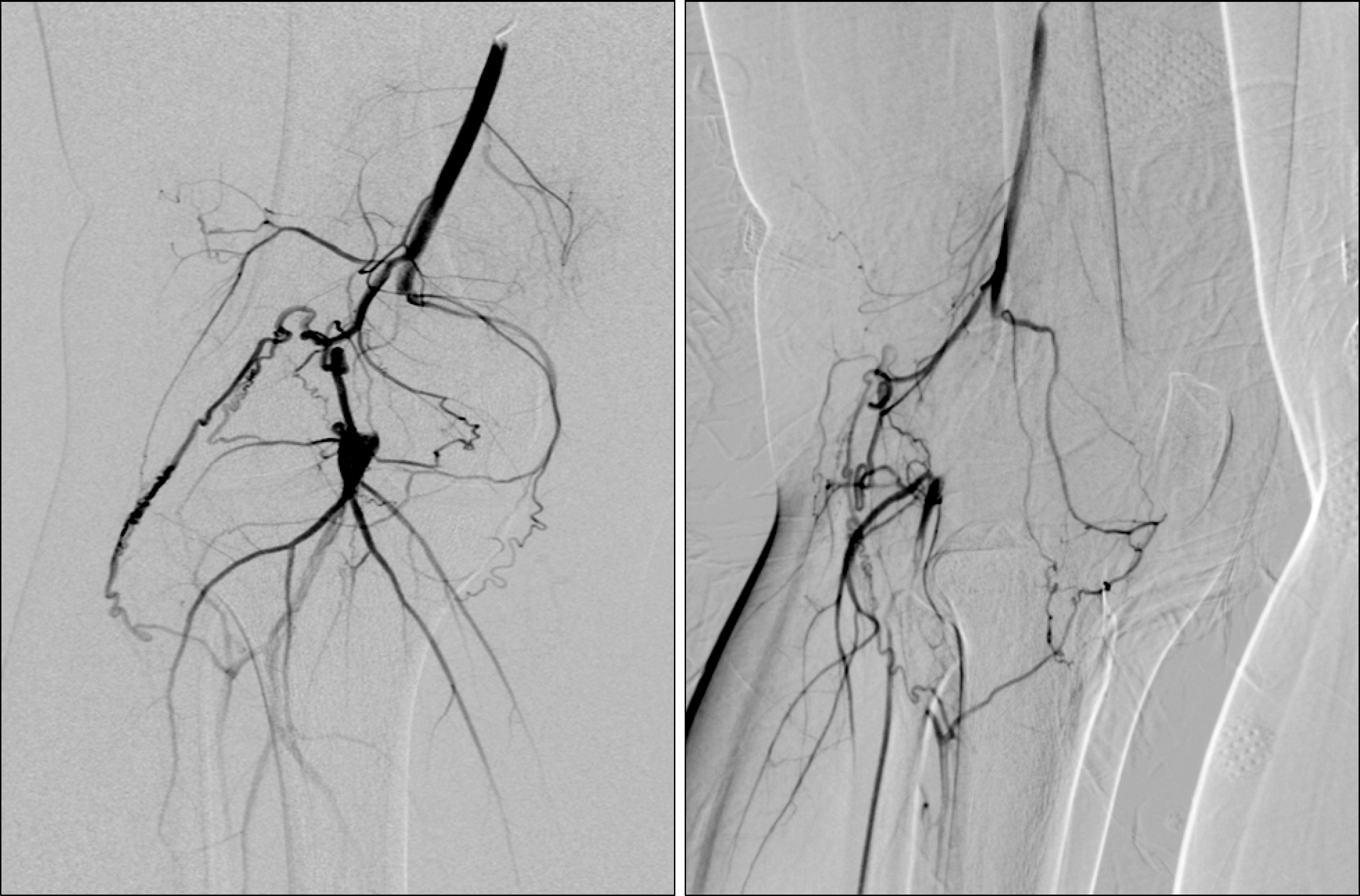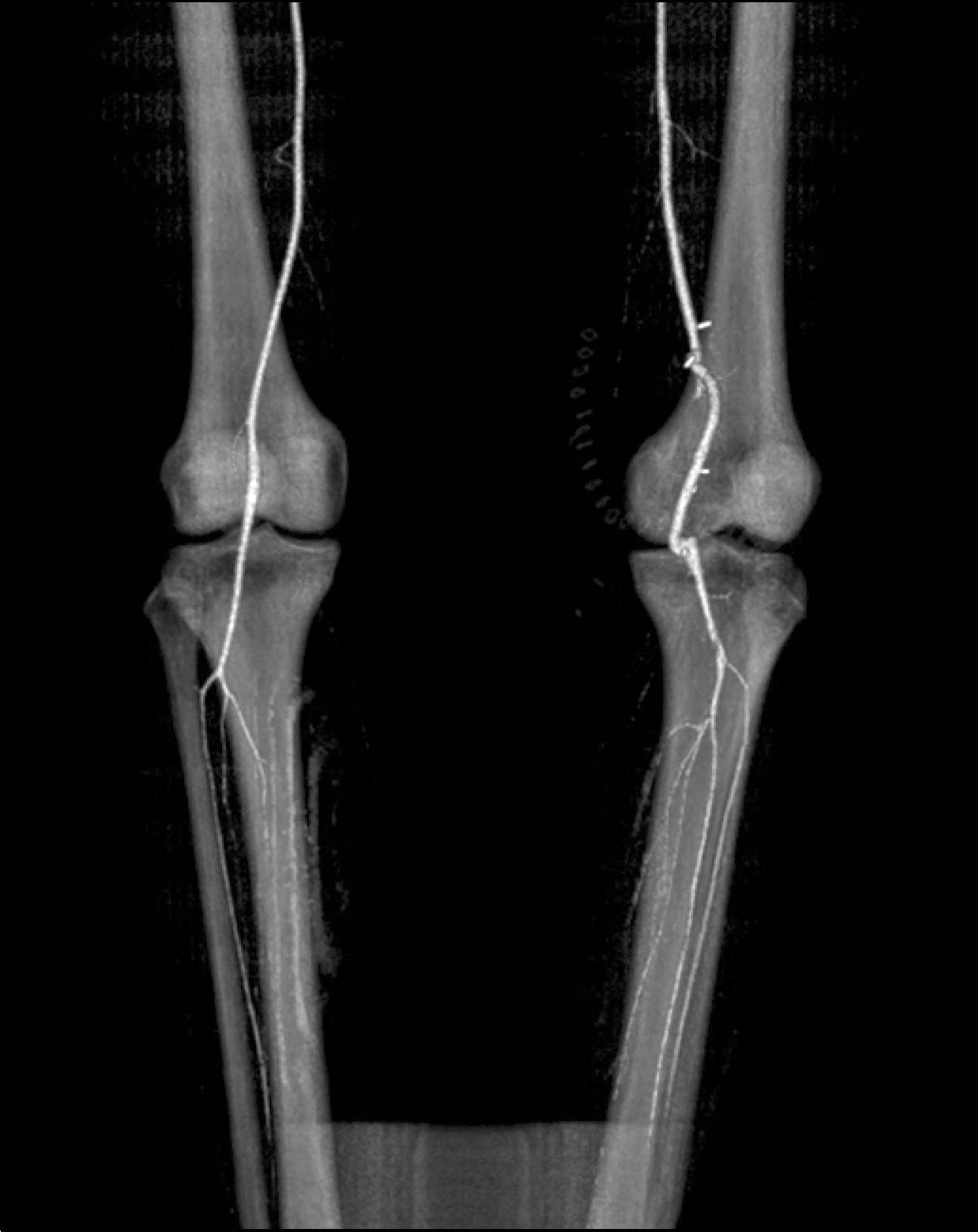Abstract
Popliteal artery entrapment syndrome can result from abnormal branching patterns of the popliteal artery or the anatomically abnormal placement of nearby muscles and tendons leading to a sustained compression of the popliteal artery. This compression leads to chronic capillary damage and early arteriosclerosis and embolism that can lead to distal ischemia. Thus early treatment is required to prevent harm to the lower limb. This is a rare congenital disease that mostly affects young adults, usually presenting with intermittent claudication of the leg, coldness and edema. A case where a 16-year-old female presented with pain and coldness in the lower right limb that started 1 year ago will be discussed. In this case, magnetic resonance imaging and arterial angiography lead to a diagnosis of popliteal artery entrapment resulting from an abnormal origin of the medial head of Gastrocnemius.
Go to : 
References
2. Delaney TA, Gonzalez LL. Occlusion of popliteal artery due to muscular entrapment. Surgery. 1971; 69:97–101.
3. Bouhoutsos J, Daskalakis E. Muscular abnormalities affecting the popliteal vessels. Br J Surg. 1981; 68:501–6.

4. Stuart TP. Note on a variation in the course of the popliteal artery. J Anat Physiol. 1879; 13:162.
5. Whelan TJ, Haimovici H. Vascular surgery: principles and technizues. 2nd ed.New York: McGraw-Hill;1984.
6. Rich NM, Collins GJ Jr, McDonald PT, Kozloff L, Clagett GP, Collins JT. Popliteal vascular entrapment: its increasing interest. Arch Surg. 1979; 114:1377–84.
7. di Marzo L, Cavallaro A, Sciacca V, Mingoli A, Stipa S. Natural history of entrapment of the popliteal artery. J Am Coll Surg. 1994; 178:553–6.
8. Fujiwara H, Sugano T, Fujii N. Popliteal artery entrapment syndrome: accurate morphological diagnosis utilizing MRI. J Cardiovasc Surg (Torino). 1992; 33:160–2.
Go to : 
 | Fig. 1.Popliteal artery entrapment resulting from an abnormal origin of the medial head of gastrocnemius, arising from supracondylar region, passing between popliteal artery and vein and inserting into medial head of muscle. |
 | Fig. 2.Nearly complete segmental occlusion in the right popliteal artery at the superior aspect of femoral condyle. |
Table 1.
Classification of the popliteal artery entrapment syndrome according to Whelan and Rich classification5,6)




 PDF
PDF ePub
ePub Citation
Citation Print
Print



 XML Download
XML Download